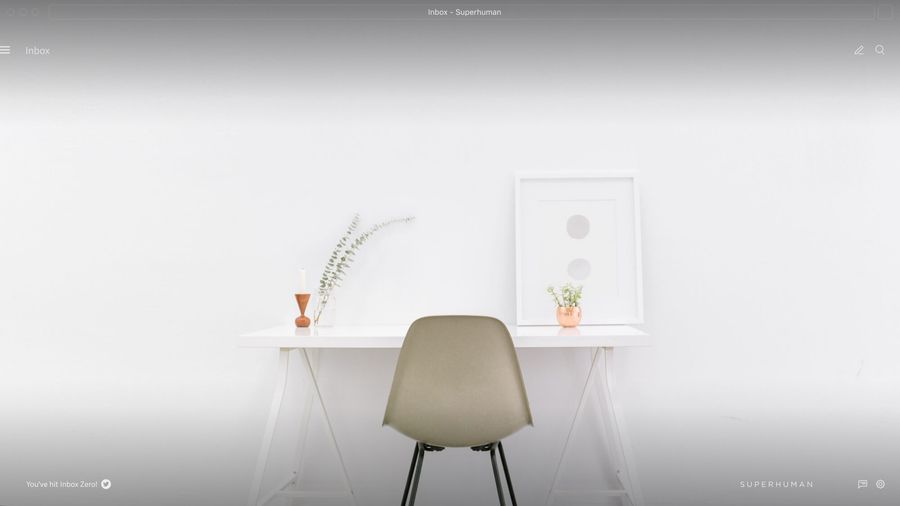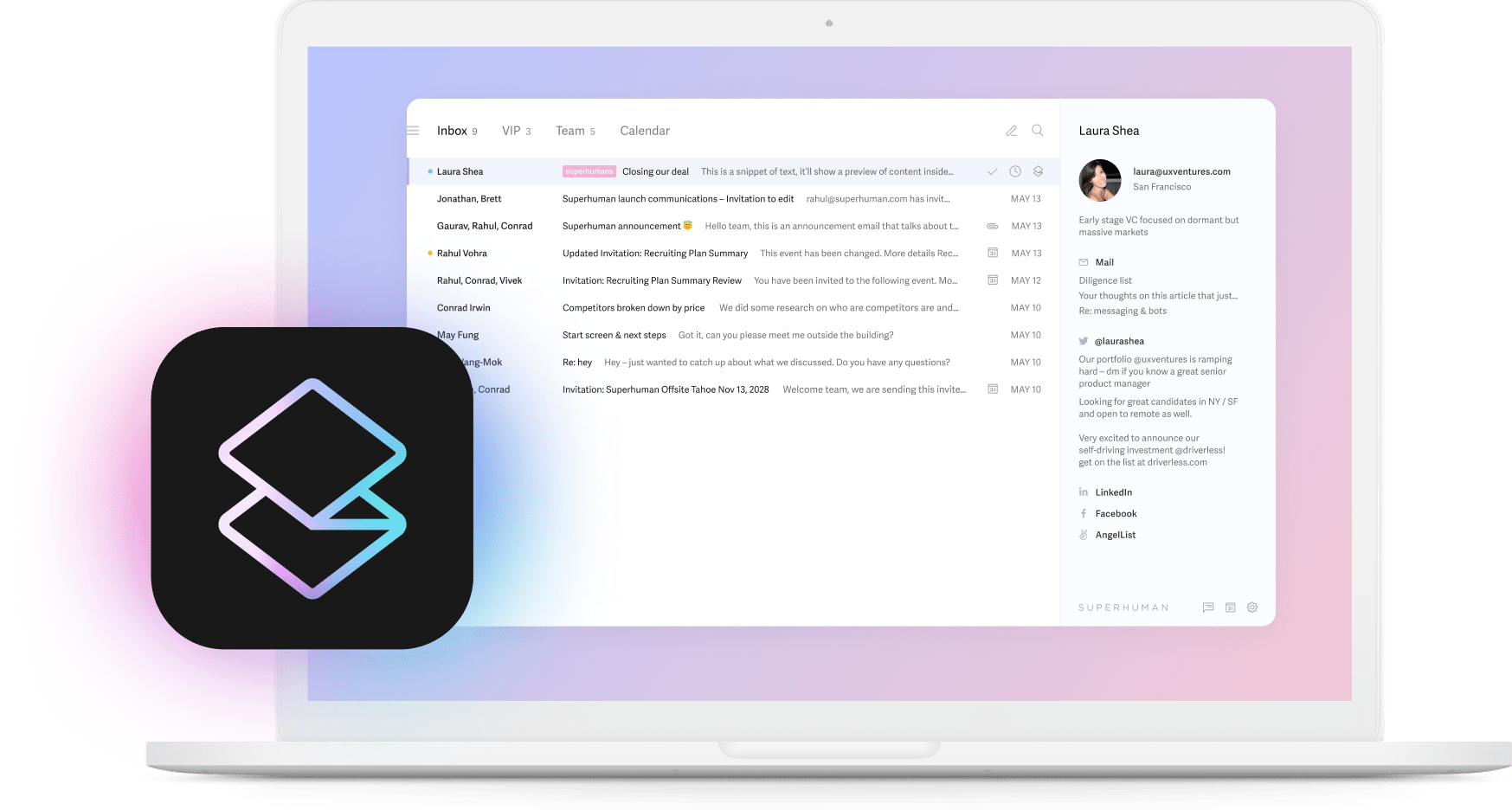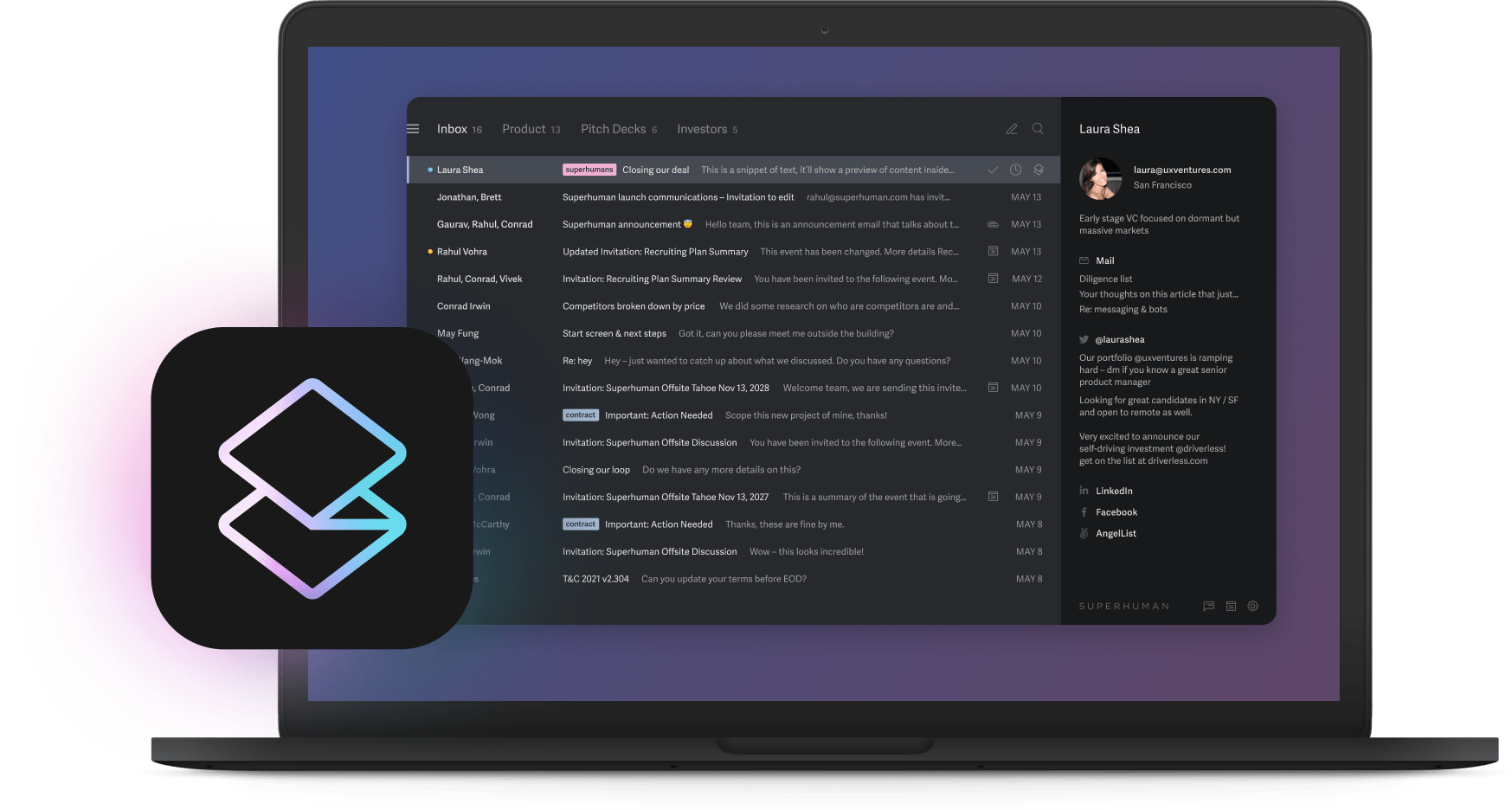
You've clicked on an article for a Digital Minimalism book summary — is it because you're feeling overburdened or distracted by the technology in your life? If so, we'll cut right to the chase!
You're likely already familiar with Cal Newport, the famous productivity expert who introduced us to Deep Work. His groundbreaking book Digital Minimalism is for anyone who feels overwhelmed or reliant on their technology and wants to develop productive habits on using technology. If that sounds like you, read on for all the key takeaways from the book.
Digital Minimalism: Choosing a Focused Life in a Noisy World by Cal Newport
The book in one sentence: Digital Minimalism is about learning how to draw the line with technology, taking more time away from digital devices, while focusing your online time on activities that support your values and goals.
Key concepts:
- Digital Minimalism: "A philosophy of technology use in which you focus your online time on a small number of carefully selected and optimized activities that strongly support things you value, and then happily miss out on everything else."
- Digital declutter: A practice for defining boundaries around your technology use, taking a 30-day break from most tech, and then reintroducing it slowly.
- Solitude deprivation: A state of spending almost no time alone with your own thoughts.
- Social Media Paradox: The way that social media can make you feel both happy and sad, or both lonely and connected.
- The Bennett Principle: Prioritizing the physical over the digital by seeking out real-world social interactions and using your skills to produce physical things, not just digital ones.
Big takeaways:
- Digital minimalism is about 3 principles laid out by Newport: "clutter is costly," "optimization is important," and "intentionality is satisfying".
- Non-digital downtime should stimulate your mind, bring you joy, and allow you to spend time with your own thoughts, free from input from other minds.
- The "Social Media Paradox" is Newport's observation that social media makes many people feel connected and happy, while simultaneously lonely and sad.
Part 1: Foundations
In the first section of the book, "Foundations", Newport introduces many key concepts, outlined below.
The Lopsided Arms Race
In the first chapter of the book, Newport makes a bold claim: clicking "like" on social media is the new smoking. But as he lays out his evidence, he begins to seem less catastrophizing.
"People don’t succumb to screens because they’re lazy, but instead because billions of dollars have been invested to make this outcome inevitable", he writes.
Newport summarizes research by Adam Alter, author of Irresistible, who wrote about our relationships with smartphones and social media platforms from a psychological perspective. The research shows that addiction doesn't have to involve a chemical component — people can become addicted to an action (which is called "behavioral addiction"). And technologies like iPhones and Facebook are, put simply, designed to addict their users.
This technology is specifically engineered to be addictive. The intermittent positive reinforcement that we receive from social networks and smartphones — like notifications, likes, and retweets — was built in on purpose, to maximize reliance on these new technologies. Combatting that reliance requires completely reshaping how we interact with technology, which is what Newport teaches in the rest of the book.
Digital Minimalism
In the next chapter, Newport introduces and defines the concept of digital minimalism: "A philosophy of technology use in which you focus your online time on a small number of carefully selected and optimized activities that strongly support things you value, and then happily miss out on everything else".
Digital minimalists "don’t mind missing out on small things", he continues. "What worries them much more is diminishing the large things they already know for sure make a good life good."
This chapter has a few important takeaways for readers:
- Tips, tricks, and "life hacks" aren't enough to transform your relationship with technology. It needs to be rebuilt from the ground up, using your deeply held values as a reason.
- Every new technology must pass a few tests. First, it needs to support your values. If it does, you must ask yourself whether that technology is the best way to support your values. If not, either optimize the technology or avoid it.
- Digital minimalists don't necessarily always reject certain technology tools. They're adept at stripping away unnecessary features, allowing them to use a tool only to meet their values and goals. For example, using Facebook just to stay connected with friends and family means never clicking "like" on an article or sharing a political post.
Here, Newport also introduces the 3 core principles of digital minimalism:
- Clutter is costly: Cluttering your time and attention with unnecessary apps and devices takes away from your overall goals and values.
- Optimization is important: Think carefully about how to use each technology you introduce in order to get full benefits from it.
- Intentionality is satisfying: Always keep your values and goals in mind when evaluating a new technology or deciding how to use a device.
The Digital Declutter
So how does one become a digital minimalist? In Chapter 3, Newport describes a 30-day method he calls the "digital declutter."
He writes, "Put aside a thirty-day period during which you will take a break from optional technologies in your life. During this thirty-day break, explore and rediscover activities and behaviors that you find satisfying and meaningful. At the end of the break, reintroduce optional technologies into your life, starting from a blank slate. For each technology you reintroduce, determine what value it serves in your life and how specifically you will use it so as to maximize this value".
The digital declutter process has 3 steps.
Step 1: Define your technology rules
This may be the hardest part of the process. In this step, you confront all the technology in your life and determine whether it's optional. "Optional" technology is any device, app, or service that you can stop using for 30 days without harming or significantly disrupting the daily flow of your personal or professional life.
If you're thinking that you have a lot of technologies that live in a gray area, you're not alone! Newport specifically mentions video games and Netflix, saying that many people consider them optional, but many others don't. At the end of the day, this is your digital declutter, and you get to make the rules — but try to be as ruthless as possible, because the more technology you can eliminate, the cleaner a slate you'll have when you start rebuilding your relationship with digital devices.
Step 2: Take 30 days off
The next step is to take a 30-day break from all the technology you found to be optional. This can mean avoiding that tech entirely for 30 days, or only using it under predetermined rules about how and when (for example, giving up your personal Facebook page, but still accessing the site at specific times to run a Facebook page for your business).
Write down a list of technologies that are banned, and all the rules and procedures about technologies that you can use under certain circumstances. Put that list somewhere you'll see it every day. This is key to success, Newport writes.
The first week or 2 will be the hardest, since your mind has developed expectations about technology and the distraction or entertainment it provides. This is similar to a withdrawal period during a detox. Newport writes that for most people, that discomfort begins to fade away after the first half of the digital declutter.
When you feel an urge to check or use a banned technology during your 30-day break, Newport instead recommends working on rediscovering non-digital activities that bring you joy — "high-quality leisure".
"This period should be one of strenuous activity and experimentation", he writes. "You want to arrive at the end of the declutter having rediscovered the type of activities that generate real satisfaction, enabling you to confidently craft a better life—one in which technology serves only a supporting role for more meaningful ends".
Step 3: Reintroduce technology
After the 30 days, you can start to reintroduce some of your optional technologies, but with careful intentionality. For each piece of technology, ask yourself:
- Does it support something you value deeply?
- Is it the best way to support your values?
- How will you use it to minimize harm and maximize value?
The goal of this step is to start from scratch, and only allow technology back into your life if it passes a strict set of tests, and you can constrain its use with rules and procedures to ensure it always benefits you.
Part 2: Practices
If Part 1 was all about laying the foundation for digital minimalism, Part 2 is all about putting it into practice and maintaining the digital declutter you've worked so hard for.
In Part 2, Newport introduces specific ways to counter the addictive nature of technology and cultivate more valuable leisure time.
Spend Time Alone
This is the chapter where Newport introduces his oft-cited concept of "solitude deprivation": a state in which we spend almost no time alone with our own thoughts.
Too often, when alone or bored, people default to "low-quality leisure activities", Newport writes. Playing mobile games, checking for text messages that aren't there, mindless scrolling — these are the types of activities that can be considered "low-value" because they lack intention.
Avoid these by seeking out solitude. For practice, Newport recommends starting by:
- Leaving your phone at home
- Taking long walks
- Writing letters to yourself and others
Don't Click "Like"
Humans are wired to be social. We can see that in the way that, when given downtime, our brains default to thinking about our social life. The loss of a friend or social connection triggers the same parts of the brain as physical pain.
But social media use isn't the same as being social. As Newport writes, "The more you use social media to interact with your network, the less time you devote to offline communication. The small boosts you receive from posting on a friend’s wall or liking their latest Instagram photo can’t come close to compensating for the large loss experienced by no longer spending real-world time with that same friend".
A big part of what makes social media addictive is how we're always chasing the little "high" that comes from social approval — a "like" or a retweet on something we posted. So, Newport says, stop clicking "like". Instead, use conversation-centric communication — adopt Newport's mindset that real conversation is the only way to maintain a meaningful relationship. Text-based communication doesn't count as conversation. To become more conversation-centric, Newport recommends that you consolidate texting into one or 2 times per day, and hold "conversation office hours," a scheduled time to seek out a loved one and have a real conversation with them.
This approach takes sacrifice — you'll reduce the overall number of people you can realistically interact with. But those interactions will be deeper, more meaningful, and purposeful as you work toward your values and goals.
Reclaim Leisure
If you embrace digital minimalism, there's no denying that there will be a void left by removing certain types of technology from your life. In this chapter, Newport explains how to fill that free time with "high-quality" leisure activities that contribute to your well-being, satisfaction, and inward joy.
Newport makes an important distinction here — in a world that's constantly chasing productivity, doing activities for no reason other than the satisfaction and joy they bring you personally can feel like wasting time. But it's an important part of being a digital minimalist — to balance your newly reduced digital life with a personal life that allows you to keep working toward your greater values.
It can help to create a "leisure plan" — what Newport describes as the Bennett Principle:
- Prioritize demanding activities over passive consumption.
- Use skills to produce valuable things in the physical world (not just the digital world).
- Seek out activities that require structured, real-world social interactions.
In addition, Newport recommends trying to learn and apply one new skill per week for 6 weeks. As you reclaim leisure time in your life, don't forget to get regular doses of solitude to be alone with your own thoughts!
Join the Attention Resistance
In the final chapter of the book, Newport revisits the idea of the "attention economy" — how tech companies make money by demanding your attention and repackaging it and selling it to advertisers. The final practice for digital minimalists is to resist participating in this economy. For that, Newport offers 5 important practices:
- Delete social media from your phone.
- Turn your devices into single-purpose computers. For example, keep separate devices for work and personal business.
- Use social media like a professional. This means only interacting in meaningful ways that contribute to a goal — not mindlessly scrolling or clicking "like".
- Embrace slow media. This includes books, newspapers, and podcasts.
- Dumb down your smartphone by deleting unnecessary apps. Try to use your phone more for talking than for text-based communication.
Books mentioned in Digital Minimalism
Newport quotes or references these other books, that you might also find interesting:
- Drunk Tank Pink: And Other Unexpected Forces That Shape How We Think, Feel, and Behave by Adam Alter
- Irresistible: The Rise of Addictive Technology and the Business of Keeping Us Hooked by Adam Alter
- Reclaiming Conversation: The Power of Talk in a Digital Age by Sherry Turkle
- Walden by Henry Thoreau
- What Technology Wants by Kevin Kelly
- How to Live on 24 Hours a Day by Arnold Bennett
- Handmade: Creative Focus in the Age of Distraction by Gary Rogowski
- The Attention Merchants: The Epic Scramble to Get Inside Our Heads by Tim Wu
Complement your digital declutter with the right tools
We've talked a lot in this Digital Minimalism summary about Cal Newport's principle of being intentional about the types of technology you use. One tool that can help achieve intentional interactions with your inbox is Superhuman.
Superhuman helps you get through your email inbox twice as fast — and offers features for customizing notifications, snoozing messages for later, and scheduling email sends at specific times. All these features come with one goal: to help you spend less time on email.
Superhuman is the perfect tool to complement your digital declutter and help you spend less time in front of screens. Sign up today.






